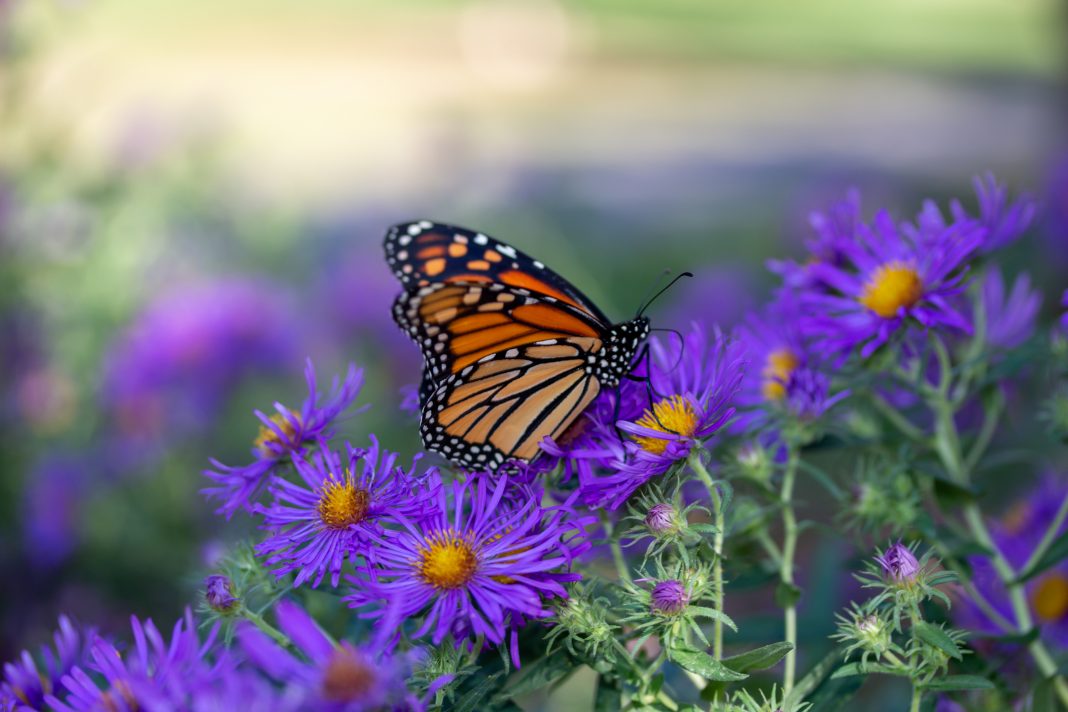In his latest research, Keith A. Hobson, Research Scientist and Professor at Western University, explores why stored fuel is critical to migrating animals, such as monarch butterflies
Conserving migratory animals in a rapidly changing world requires we quickly and efficiently determine the most critical or vulnerable points in their annual cycles that typically involve numerous locations spread over hundreds to thousands of kilometers.
Although we know migration routes or connections between breeding and wintering regions for many species of concern, how animals fuel their migration along migratory paths and how their nutritional needs are affected by various factors generally remains unknown.
In times of current and predicted climate change, the added burdens of weather extremes add to the many threats facing migrants. So it is ever more urgent to ensure that our conservation efforts and funds are directed at the most critical locations temporally and spatially.
With this in mind, our research focus has been on determining how a long- distance migratory insect of great conservation concern fuels not only its autumn migration but also how it might recover from droughts and adverse weather conditions experienced along its migration route.
Examining monarch butterfly migration patterns
The eastern North American breeding population of the monarch butterfly (Danaus plexippus) has become an iconic example of long-distance insect migration.
Each year, millions of adults migrate from their natal sites in the eastern United States and Canada to favorable thermal environments at the overwintering sites in central Mexico’s high-altitude oyamel fir (Abies religiosa) forests, a journey that can exceed 3000 km.
Once monarch butterflies reach these overwinter sites, they must store enough lipids to last them for the three to four-month overwinter fast. The dynamics of lipid acquisition and storage then is critical to their survival. It is well established that the fall migration is fueled by nectar. Interactions between weather and nectar availability, the source of the carbohydrates converted to lipids during migrations, and weather conditions at overwintering sites clearly deserve much attention.
Despite considerable interest in the conservation of migratory monarch butterflies in North America and recognition of the importance of nectar availability to their conservation, little is known of the dynamics of lipid synthesis and storage during migrations. This stands in contrast to conservation concerns directed at the breeding and wintering grounds where the availability of host milkweed plants (Asclepias spp.) and mature high-elevation fir forests, respectively, are known to be important.
Analysing lipid stores
Previous research assumed that monarchs generally increase lipid stores as they approach their wintering grounds and that Texas and northeast Mexico provide the bulk of the lipids required for both overwintering and subsequent reproduction in spring. Our team have used stable isotope tracking approaches on bulk lipids to demonstrate that, at least in some years, much of the overwinter lipid stores are likely obtained throughout the floral corridor in Mexico leading to the wintering grounds.
In an extensive collaborative study involving colleagues in Canada, the United States and Mexico, we examined indices of stored lipid and water levels together with measurements of wing loading of monarch butterflies collected at 14 locations during the fall migration from southern Ontario (42.6oN) through to two overwintering sites (Chincua and Cerro Pelon, 19.4oN) in central Mexico.
Samples were obtained during the fall of 2019, a period of moderate to extreme drought in central Texas, and during the fall of 2020 and 2021, when conditions in that region improved. Since monarchs that reached overwintering sites represent migratory success, by comparing the conditions of monarchs at these sites with values obtained along the migratory route, we aimed to evaluate the importance of nectar foraging during the latter portion of the migration.
As predicted, the extreme drought in Texas in 2019 resulted in extremely low lipid levels of monarch butterflies staging there. However, the monarchs reaching the overwinter sites that year had “recovered” lipid levels sufficiently to allow overwintering. That result was also found in the next two years of the study, even though conditions in Texas had improved. So, clearly, monarchs nectared on flowers during the last phase of their migration in central Mexico and the availability of nectar there ‘rescued’ them from the severe drought conditions farther north.
Our results emphasize the importance of suitable nectar foraging sites, especially through the Mexican portion of the migration and underline both the hazards posed by climatic events but also the resilience of this species.
Optimising conservation efforts
Despite extensive conservation concern among the three countries involved and substantial funding directed at monarch conservation in North America (especially given the recent albeit questionable listing of monarch butterflies as endangered by the International Union for the Conservation of Nature), few studies have considered eco-physiological connections linking weather and population status, and there is a paucity of studies on direct effects of weather on any stage during the lifecycle.
While the importance of nectar has been recognized, until now, there has been very little attention to how we can use such information for the effective conservation of monarch butterflies. Our research suggests that conserving the nectar corridor close to the overwinter sites in Mexico may be crucial for the long-term survival of the migratory phenomenon. Currently, a worst-case scenario that we have luckily avoided is the occurrence of an extensive drought from Texas to the overwinter colonies in autumn.
Although presented here are the results of our work on energetic constraints faced by a long-distance migratory insect, the need to understand how all migrant animals of conservation concern fuel their migration is clear. Stopover sites that provide safe opportunities for rest and refueling during long journeys are a critical link in the migratory chain. These sites’ national and international conservation and understanding how their value can be maintained or increased will be a major challenge.

This work is licensed under Creative Commons Attribution-NonCommercial-NoDerivatives 4.0 International.


